Fortress with wings - strategic bomber Boeing B-29 "Superfortress"
The development of the bomber was carried out in accordance with the specification R-40B, prepared in January 1940. The designers of the company development of the ultra-long bomber began in March 1938 year. Boeing has developed a series of sketch designs, the best of which is the “341 model” - a monoplane with a mid wing, a three-bearing chassis with a nose wheel, and air-cooled R-2800 Pratt & Whitney engines. This project was presented to the customer. However, in March 1940, the specification was adjusted - requirements for defensive weapons and bomb loads increased. As a result, the new project - the “345 model” - had the Wright X-cylinder RN 18 “Duplex Cyclone” air-cooled engines. Defensive armament, consisting of 3350 machine guns caliber 10 mm and gun caliber 12,7 mm, housed in four tail-mounted retractable turrets with remote control. The control system made it possible for any shooter (except the tail) to control other installations. Thus, it was possible to transfer the enemy aircraft from the visibility zone of one arrow to another, concentrating on the enemy each time the maximum fire. The cockpit - sealed. The usual hydraulic and pneumatic systems for driving most of the bomber units were replaced with electric motors. In May 20, the draft design was considered by the military, and in August, Boeing received an order to manufacture two prototype aircraft. Machines assigned the designation XB-1940. Aircraft designer E. Bell led the design engineering. A total of 29 billion dollars have been invested in the program.
The XB-29 prototype equipped with R-3350-13 engines for the first time 15 September 1942 of the year took off. Tests were difficult - there were regular problems with the engines. The second prototype became the most unlucky in this respect: during the first flight (December 30 1942 of the year) one of its engines caught fire, and the plane 18 of February 1943 of the year crashed. The cause of the disaster is a fire in the engine nacelle that has spread to the fuel tank. Only on the third prototype (the beginning of the tests - June 1943 of the year) was it possible to achieve trouble-free operation of the engines. This made it possible, according to Boeing’s drawings, to begin production of the pre-production batch of YB-29 consisting of 14 machines. Pre-production bombers were equipped with engines R-3350-21. The first of the YB-29 was ready in April 1943 year, but his first flight took place only in July, when it became clear that the tests of the third prototype were successful. At the end of August, 1943 of the year established deliveries of serial B-29. The production of bombers carried out the company "Boeing", "Martin" and "Bell". A huge number of new enterprises were built for production - the main sections of the aircraft were produced by 60 enterprises. The total production amounted to 3965 machines. Production completed in May 1946.
B-29 bomber design
The Boeing B-29 "Superfortress" - a heavy four-engined bomber, all-metal, with a working skin, was made according to the layout of the center section. The glider was assembled from aluminum sheets and profiles. Additionally, plexiglass, steel armored plates and armored glass were used.
The fuselage, having a circular cross section and a working skin, consisted of five parts. A circular cross section is provided for maximum mechanical strength and minimal aerodynamic drag. In the design of the fuselage used stringers, frames, auxiliary frames, reinforcing inserts and a working skin, the sheets of which overlapped butt. To the bearing elements of the fuselage trim was attached with rivets with hidden heads. Convex rivets were used in the area of machine gun turrets to provide extra strength.
The tail plumage is classical, free-carrying. Stabilizers with load-bearing trim, ribs and side members. Rudders and heights are covered with fabric.
Chassis retractable tricycle. Two main landing gear carried on two wheels and equipped with two hydropneumatic shock absorbers. The front landing gear, which also has two wheels, was equipped with one hydro-pneumatic shock absorber. In the rear fuselage there was a crutch, retractable in flight, protecting the rear lower turret. To remove the chassis served as electric motors. Cleaning took about 1 minutes. The front rack was laid back, the main rack - up and forward. The brake system had a hydraulic drive.
In the fuselage of the B-29 "Superfortress" there were three pressure cabins. The front and rear cabs were connected in a tunnel with a diameter of 34 inches and a length of 33 feet. The tunnel allowed crew members to cross between cabins. The bomber crew consisted of a 10 – 14 man. The standard crew included 10 people: the crew commander, co-pilot, navigator, flight engineer, scorer, radio operator and four gunners. The anterior pressurized cabin served to accommodate both pilots, a navigator, a flight engineer, and a radio operator. The nose of the fuselage with a significant glazing gave a good overview of the pilots and the scorer.
In the rear of the pressurized cabin were placed three side gunners. Also located here are remote control systems for turrets. Sights brought under the transparent dome. On the sides there were two domes, in the upper part of the fuselage - one. Nearby were four loungers used during the flight for the rest of the crew. The rear cockpit also contained the seat of the radar operator, a possible eleventh crew member.
At the rear end of the fuselage was a small tail cockpit for the tail gunner. All crew jobs had protection from shrapnel and bullets.
The use of the germocabins simplified the work of the crew members, protecting them from low pressure, noise, cold and drafts. In the cockpit it was possible to communicate without the use of intercoms. The pressure was maintained by boosting the internal engines. When approaching the target, the pressure in the thermocabins was released to prevent rupture in the event of an accidental hit. With the shut-off thermo cabins, oxygen masks were used.
Wings cantilever, trapezoidal shape with rounded tips, elevation 4,5 g, elongation 11,5, rear edge perpendicular to the fuselage, sweep of the leading edge 7 gr.
The choice of the wing profile of the heavy aircraft was carried out by the aerodynamic division of the Boeing company even before the B-29 design. A promising profile created for the flying boat "Boeing HRVV-1 Si Ranger". It had a large thickness in the central part, and a concave surface at the rear edge above and below. The high profile provided low aerodynamic drag and significant lift at high speeds. The high ratio of lift and aerodynamic drag allowed reducing the wing area. In this case, the wing had a significant lengthening and a large scope.
The wings consisted structurally of 5 parts: a center section, two consoles (with a landing gear, flaps and two nacelles) and two ends. The bearing elements of each part are the front and rear spars connected by ribs. On the B-29, the designers used rigid ribs. Wing frame supplemented farm front edge. For fastening the cladding of duralumin sheets (set end to end) they were used with flat-head rivets. Front farm - removable for access to internal nodes.
The B-29 "Superfortress" was equipped with large Flower-Zapp slatted flaps installed along the trailing edge. Metal-covered flaps extended from the fuselage to the aileron. The ailerons are covered with matter, balanced dynamically and statically, equipped with valves and trimmers. The design of the wing, flaps and ailerons ensured the landing speed of the entire 160 km / h.
The total area of the wings was 1615 m 2, and weight - about 9980 kg.
The B-29 strategic bomber propulsion system consisted of X-Rum X-RX4 Reith Cyclone engines. On various versions of the aircraft put the following engines:
- R-3350-13 - on the prototype. Power 1618 kW / 2200 hp at a height of 25 thousand feet (7620 m);
- R-3350-23 - on the first production B-29, produced by Bell and the Wichte plant. Starting power 1618 kW / 2200 hp, combat 1787 kW / 2439 hp;
- R-3350-41 - on the latest B-29 series. Characteristics have not changed;
- R-3350-57 - on B-29, released in Renton. Combat power 1839 kW / 2500 hp
The XB-29 prototypes and the YB-29 pre-production bombers were equipped with three-blade propellers with a diameter of 5,18 m (17 feet) of the Hamilton Standard Hydrometeor. On the serial B-29, four-blade Hamilton Standard screws were installed with a diameter of 5,05 m (16 feet 7 inches) with a variable pitch. To increase the reliability of the screw and reduce its noise, the rotational speed was rather slow. Some B-29 and B-29B were equipped with Curtiss Electric screws with an electric pitch change system. All screws changed pitch synchronously using a common regulator.
Each of the engines had an independent fuel supply. Four main fuel tanks were located between the side members in the wings. The fuel for the internal engines was located in two tanks between the outer and inner engine nacelles. Tanks for external engines were located outside the external nacelles. In the case of a hole in one of the tanks, the fuel was shipped to the whole. The total fuel volume was 30283 L (8 thousand US gallons). Also in both bomb compartments it was possible to install four (two in each) additional tanks.
Operating experience of B-17 and B-24 showed that the hydraulic system has a very low survivability, so they tried to exclude it as much as possible from the design. As a result, the B-29 bomber hydraulic actuator left only on the chassis brakes. The main aerodynamic rudders were controlled with the help of the classic. To improve the reliability of all traction duplicated. Trimmer adjustment was made by electric motors.
The control system "Superfortress" was atypical for strategic bombers. In the initial design phase of the B-29, the designers feared that large rudders would require considerable effort from the pilot. The use of electrical or hydraulic amplifiers was envisaged, but this complicated the design. Trimmers arranged in such a way that they counterbalanced the forces acting on the handlebars, which eliminated the amplifiers. For unloading pilots from excessive information, some devices, mainly controlling the operation of the engines, were transferred to the console at the place of the flight engineer.
On the B-29, the project provided for defrosters, however, they were often removed in a combat situation, since they damaged the rudders during damage and later they were completely abandoned. The system returned to B-29 after the war. These were modifications adapted for use in the Arctic and some vehicles that took part in the Korean War.
The aircraft carried the standard radio and navigation equipment of the US Air Force. AN / APQ-29 radars were mounted on B-29 and B-13A, scanning the surface of the earth. It was used for bombing from a great height and navigation. On the B-29B installed radar AN / APQ-7 "Eagle", distinguished by high resolution. Later, the B-29B was equipped with an AN / APQ-15B radar for detection of enemy aircraft in the rear hemisphere, which was associated with a tail turret sight.
Standardly, the B-29 bombers were equipped with three cameras used in bombing. The cameras were installed between the tail and rear pressure cabins in the rear fuselage. In addition, some crew members had K-20 hand-held cameras.
Armament B-29 "Superfortress"
The B-29 had two compartments for bombing: front and rear, which were separated by a center section. Inside the compartments were mounted vertical racks with locks for bombs. Also cargo containers or additional gas tanks could be attached to the racks.
Initially, electric bombers were installed on the bombers. The electromotors, which smoothly open the doors, began to work on approaching the target. A lot of time was spent on opening the valves, and this allowed the enemy to navigate. In addition, the opening flaps created a lot of resistance, which caused tangible vibrations. Therefore, in the process of mass production, the electric drive was replaced with a pneumatic drive, which reduced the time of plowing up to a few seconds. At the same time, the pneumatic drive of the sharply swinging open shutters of the bomb compartment to the ground could cause serious injuries to the person standing near them. Therefore, on the ground, the doors of the bomb holes were kept constantly open.
B-29 "Superfortress" aircraft could receive the following types of bombs:
- General purpose high-explosive bombs weighing from 45 to 1814 kg (from 100 to 4000 lbs);
- incendiary bombs М52 (weight 0,9 kg, 2 pounds), М50 (weight 1,8 kg, 4 pounds), М69 (weight 3 kg, 6 pounds) combined into cassettes;
- individual heavy incendiary bombs М47А2 (weight 45 kg, 100 pounds) and М76 (weight 227 kg, 500 pounds);
- fragmentation bombs М81 (weight 118 kg, 260 pounds) and cassettes Ml, М26 consisting of fragmentation bombs М41 (weight 9 kg, 20 pounds). As a rule, they were added to the main ammunition of incendiary or high-explosive bombs;
- sea mines weighing 454 or 907 kg (1000 or 2000 pounds). Usually 5443 or 6350 kg (12000 or 14000 pounds) min were taken on board. The mines were set up from a height of 2400 m (8000 feet).
The standard bomb load of the B-29 "Superfortress" bomber ranged from 3628 to 9072 kg (8000 - 20000 pounds).
The aircraft was equipped with the Norden M optical bomb sight, which was considered secret for almost the entire Second World War. The sight had a complex device, which allowed to take into account the ballistics of the bombs and various amendments. The dropping of bombs was carried out automatically, at a certain point in time. Sight and autopilot matched, which made it possible for the scorer to take control of the aircraft during the bombing.
During the war years, the B-29 defensive armament was very powerful. When designing, the designers proceeded from the fact that the long-range bomber would act without escorting fighters, so it needs to repel the enemy attacks on its own. The machine gun armament of the B-29 bomber did not leave dead zones around the aircraft. In this case, the designers faced another problem - the shooters needed to be placed in the pressurized cabin, which excluded the use of classic turrets, served by the shooter from the inside.
A way out of this situation was found in the use of remote-controlled turrets. The control system of turrets, developed by the company "General Electric". It used small electric motors, directing machine guns according to the indications of the sight mounted in the pressurized cabin.
The plane was installed four turrets: two on the top and two on the underside of the fuselage. Another set in the tail. Bombardier ran the front turrets. The side arrows controlled the rear bottom turret. The shooter, in the central firing position served the upper rear turret. The tail unit serviced tail gunner. In addition, it was possible to control the turrets from other posts - 24 control combinations were provided.
The arrows pointed the aiming device at the target. The automatic system set the necessary corrections for parallax, wind direction and force, gravity and turned the turret. The descent was also carried out remotely. The remote fire control system used on the B-29 became a new word in aviation, far ahead of his time.
The turrets were equipped with blockers that did not allow shooting through their aircraft. Since the keel was large, the machine guns were turned off at the moment when they turned in his direction. The front lower turret during the take-off / landing turned back the trunks, because it blocked the front landing gear, and during the bombing, they turned the machine guns forward so as not to block the front bomb hole. Machine guns of the rear lower turret during takeoff / landing turned back and rose up to the stop.
Originally, the turrets were equipped with two “Browning M-2” machine guns of 12,7 mm caliber. Since the Japanese and German fighters quite often went into a frontal attack, the number of machine guns in the upper front turret increased to four. A four-gun turret from the Northrop P-61 Black Vidou fighter was used but adapted by Emerson Electric Manufacturing Company under B-29. Initially, the ammunition consisted of 500 shots on the barrel, then it was increased to 1000, but towards the end of the war it was again reduced to 500.
The first B-29 bombers had, in addition to a pair of machine guns in the tail unit, an M-2 gun, caliber 20 mm. Ammunition for machine guns was located in a large container outside the press cabin. Ammunition guns - 110 shots. Fire from a cannon could be carried out separately or in a volley with machine guns. However, due to the different trajectories of the shells and bullets, volley fire was practically not used. Soon they stopped putting the gun.
In each of the turrets, an 16-mm movie camera was installed, which was switched on simultaneously with machine guns and turned off after the cease-fire three seconds later.
Combat use of Boeing B-29 "Superfortress"
History The combat use of the Boeing B-29 "Superfortress" is quite extensive and can be talked about endlessly. Entire books are devoted to this topic. This is explained by the fact that this strategic bomber was one of the most massive aircraft of its class - at the time of the end of the Second World War there were more than 2000 aircraft in the formation, and over the entire production period more than 3000 machines were built. Here are just some of the most significant facts from the history of the combat use of the Boeing B-29 "Superfortress".
The first to master the new B-29 bombers were the crews of the 58-th bomber wing, which included the 4 group. By January 1944, the Superfortress piloting technique was mastered, and the development of their combat use began. First of all, B-29 should have been used against Japan - new bombers in Europe were not supposed to be used, B-17 and B-24 were quite enough for these theaters of war. The “Superfortress” connections, based on the territory of India, had to use Chinese jump airfields, which made it possible to destroy targets on the Japanese islands.
In India, the first B-29 arrived in April 1944 of the year, and the first combat flight of 98 bombers took place on June 5. Their goal was a railway junction near Bangkok. The results of this flight were catastrophic - the 14 aircraft returned to the bases due to engine failures, and when 42 returned, they had to land on alternate aerodromes because they had developed fuel, and 5 aircraft crashed during landing. Near the target only 18 bombs fell. The second flight, which took place on June 14, brought even less results: 75 bombers from 18 machines failed for various reasons, 1 crashed during launch, 6 - during landing, 1 was destroyed by anti-aircraft guns. The goal - a metallurgical plant on the island of Kyushu - hit only one bomb. In the following months, "Superfortress" bombed factories, refineries and other facilities in Japan - the result of all sorties was scanty. The situation changed on August 29 1944 of the year after the appointment of General C. Limey to the post of commander of the 20-th Air Army, which united B-29 units. He managed to quickly rebuild the combat work of the bombers. As a result of the B-29 “Superfortress” raids on facilities in Manchuria, in September 1944, the volume of industrial production there decreased by 30%. The latest large-scale operation "Superfortress" using airfields in China, which were difficult to supply, was the 18 strikes of December 1944 of the year against Japanese troops near Hankow. Next, the bombers took off from the airfields of India. They were used to bombard the docks of Singapore, mine the Yellow River and Yangtze River, and the water area at Saigon. 29 March 1945, the last raid from the territory of India.
American Boeing B-29 since October 1944, worked from a base on the island of Saipan. There was relocated 73-e wing. By the end of the month, the number of "Superfascist" had already reached 100 units. The first combat departure from this base took place on October 28. The target was a Japanese naval base on the Truk Atoll. A month later, on November 24, the planes were already working for targets on the Japanese islands - aircraft factories near Tokyo. In the future, such attacks became systematic, but it was not possible to immediately achieve high results - as a rule, strikes were made from a height of 8-9 thousand meters with poor visibility, and therefore most of the bombs did not hit targets. The first successful strike can be considered as a raid on the Nagoya 13 engine plant in December 1944. As a result of the airstrike, aircraft production in Japan has decreased by about 25%. The capture of the Iwo Jima Island, which is approximately half way from the Mariana Islands to Japan, in December 1944 provided an opportunity to organize B-29 escort P-51D fighters.
The B-29 compounds in January 1945 changed their tactics: now the strikes were delivered mainly at night from medium heights using incendiary bombs. January 3 This tactic was tested during the raid on Nagoya. February 4 delivered a massive blow to Kobe - in addition to the 73 wing, an squadron of the 313 wing participated in the airstrike. Soon, the 314 air wing was transferred to Guam. The scope of combat operations using the Boeing B-29 "Superfortress" is constantly increasing. Tokyo 9 March 325 B-29 participated in the raid, which dropped a total of 1665 tons of incendiary bombs. In the same strike napalm was first used. About 150 thousand people died, more than a million homeless. Losses from the American side amounted to 14 aircraft. The next day, a blow was struck on Nagoya, then on Osaka.
In April, the 1945 aircraft wing arrived on the Mariana Islands from India, and an armed 58 29 wing was deployed from the United States. Now, the US Air Force could use X-NUMX “Super fortifications” against Japan. Now the aircraft were used not only for strikes on cities, but also for other tasks. Back in March, in preparation for the landing on Okinawa, the B-315 bombers launched massive strikes against enemy airfields. The 700 aircraft wing was mainly engaged in the destruction of oil refineries and storage tanks, and the 29 aircraft mines in coastal waters of Japan. About 315 acoustic mines were delivered.
Boeing B-29 "Superfortress" was the first (and only) aircraft to use nuclear weapon in combat conditions. To this end, in December 1944, the 509-I mixed air group was formed. It includes 15 B-29 "Superfortress", adapted to drop atomic bombs. After training with the dumping of mass-dimensional mock-ups on American territory, the squadron was relocated to Tinian in April 1945 of the year. 6 August aircraft of this part dropped an atomic bomb on Hiroshima, and 9 August on Nagasaki. As a result of the first airstrike, 129 was hit by thousands of people, of which fatally 78 thousand. The damage caused was equivalent to the 2 thousand “Superfortress” raid. In Nagasaki, about 35 thousand people died, and the injured - 60 thousand. Ordinary bombing continued along with nuclear strikes. 14 August - the last day of mass raids on Japanese territory. On this day, a blow was struck around 740 B-29 "Superfortress".
After the end of the Second World War, the B-29 "Superfortress" became the basis of the Strategic Aviation Command, formed in March of the 1946 year. Initially, it consisted of 14 groups armed with B-29. In addition to the United States, these aircraft were based in the UK. The replacement of B-29 with B-50 bombers (the further development of Superfortress) began in 1949. In 1950-1953, the B-29 bombers were used in the Korean War, after which they were removed from the armament of combat units.
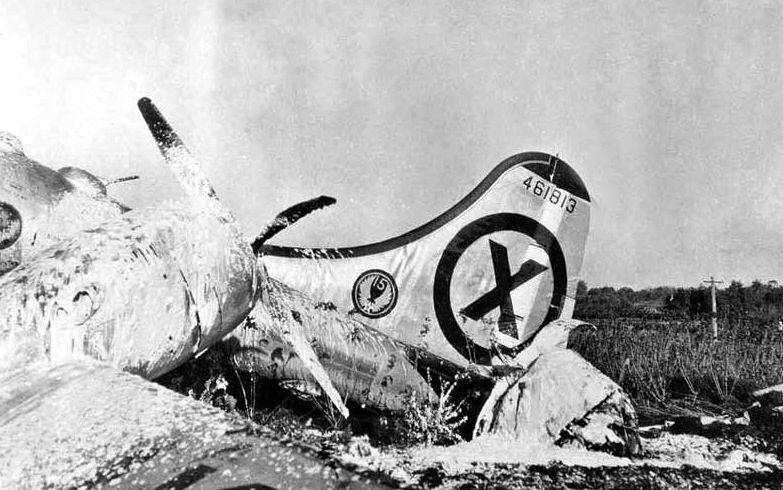
84 Boeing В-29А and 3 Boeing RB-29A were transferred to the UK in 1950 year, where under the designation "Washington" In Mk.1. operated up to the year 1955.
Three B-29 bombers in 1944, having made forced landings on the territory of the USSR, fell into the hands of Soviet specialists. Having undergone extensive research and testing, they served as a model for the Tu-4 strategic bomber.
Only a bold decision to start a production program with the involvement of many enterprises long before B-29 made the first flight allowed to make a big contribution to the victory in the war. By the time Japan surrendered, more than 2000 machines were in service, and although the order for 5 thousand aircraft was canceled the next day, the production program was phased out until May 1946. By this time, 3960 B-29 was built. Many of them have modified for various tasks, some began their careers as tankers, flying laboratories for debugging turbojet engines or sea rescue aircraft. Some took to the air even 10 years.
Variants and modifications of the B-29 "Superfortress"
XB-29 - prototypes equipped with R-3350-13 engines with three-bladed screws. They built three cars, as well as one glider, designed for static tests.
YB-29 - 14 pre-production aircraft designed for military tests with weapons. Equipped with engines R-3350-21 with four-bladed screws.
В-29 - the main serial modification. Production involved the company "Boeing", "Bell" and "Martin." Equipped with 2200-strong R-3350-23, -23А or -41. On later aircraft, the R-3350-41 or -57 engines were installed with the same power, but with increased reliability. The tail rifle installation has three barrels: in one embodiment, three machine guns of the 12,7 caliber mm, in the second version one gun of the caliber 20 mm and two machine guns.
B-29A is a serial modification built at the Boeing plant in Renton. Wingspan increased to 43,36 m. Equipped with the engine R-3350-57, -57А or -59. Front upper machine gun turret - four-barreled. 1119 machines were produced.
TV-29А - variant В-29А intended for training.
ETV-29A - carrier of fighter EF-84E. Fighters were fixed on the wing consoles.
The B-29B is a production aircraft built by Bell. Equipped with engines R-3350-51. Defensive weapons completely dismantled with the exception of the tail turret. Bomb load - up to 10340 kg. 310 machines were produced.
The EB-29B is the carrier of the XF-85 “Goblin” fighter.
В-29С - in this project it was supposed to use the latest modification of the R-3350 engine, however, due to the end of the Second World Order for 5000 aircraft was canceled.
B-29D - modification with engines R-4360-35 and increased keel. Subsequently received the designation B-50.
HV-29E - intended for testing weapons control systems.
The B-29F is a lightweight version equipped for service in Alaska. Intended for the implementation of reconnaissance flights over the USSR. 6 aircraft.
XB-29G - flying laboratory for engine testing.
HV-29H - was intended for testing weapons.
YB-29J - had modified engine nacelles and was intended for engine testing.
The RB-29J is a reconnaissance aircraft, also known as FB-29J.
YKB-29J - equipped with a Boeing fuel bar.
CB-29J - transport aircraft.
KV-29M - tanker with a towed cone.
B-29MR - aircraft equipped with receiving fuel equipment.
KV-29Р - tanker with a rigid rod.
YKB-29T is a refueling aircraft with three refueling units.
DB-29 - UAV control point.
GВ-29 is a carrier of X-1 and other experimental machines.
QB-29 - radio-controlled target.
SB-29 - rescue aircraft with a drop boat. Upgraded 16 machines.
WB-29 - weather scout.
HV-39 - modification YB-29 equipped with a V-3420-11 engine.
XB-44 - also known as XB-29D. Served as a prototype for B-50. Equipped with an engine R-4360-33. Defensive armament was limited to two tail guns.
F-13A - strategic photo reconnaissance. In the 1945 year, renamed to FB-29A, and later to RB-29A. It was later converted to conduct radio intelligence. The 117 machines were converted.
TF-13A - training F-13A.
Р2В-1S is a radar patrol aircraft. Large radar and additional fuel were placed in the bomb bay.
P2B-2S - Р2B-1S with modified and upgraded equipment. Later used to launch experimental aircraft.
Flight technical characteristics of the B-29 Superfortress:
Crew - 11 man;
Length - 30,18 m;
Wingspan - 43,05 m;
Height - 9,02 m;
Wing area - 161,27 m2;
Wing Profile - Boeing 117;
Sweep on the leading edge - 7 ° 1'26;
The coefficient of elongation of the wing - 11,5;
Average aerodynamic chord - 3,92 m;
Wing load - 397,4 kg / m2;
Wheel track - 8,69 m;
Fuel capacity - 35443 l;
The mass of fuel in the internal tanks - 25482 kg;
Empty weight - 31815 kg;
Curb weight - kg;
Weight in battle - 45926 kg;
Maximum take-off weight - 56245 kg;
Equivalent resistance area - 3,82 м2;
The drag coefficient is 0,0241;
Propeller - Hamilton Std 6526A-6;
Screw diameter - 5,05 m;
Силовая установка 4хR-3350-23-23A/41"Циклон"
Power - HP 4X2200 (4X1640 kW);
Maximum speed - 576 km / h at a height of 7620 m;
Stalling speed - 191 km / h;
Cruising speed - 370 km / h;
Combat radius - 3413 km;
Combat radius with maximum combat load - 2715 km;
Flight range - 5230 km;
Ferry range (without bombs) - 8321 km;
Practical ceiling - 12070 m;
Working ceiling - 9710 m;
Rate of climb - 8,26 m / s;
Time to climb 3048 m - 23,5 min;
Time to climb 6096 m - 61,5 min;
Runway Length - 1594 m;
Run length - 680 m;
Aerodynamic quality - 6,8;
Armament:
Bomb load - 9072 kg;
Guns - 1х20 mm;
Machine guns - 7x12,7 mm.
Based on materials:
pro-samolet.ru
www.airaces.ru
www.airwar.ru
www.brazd.ru
www.nnre.ru
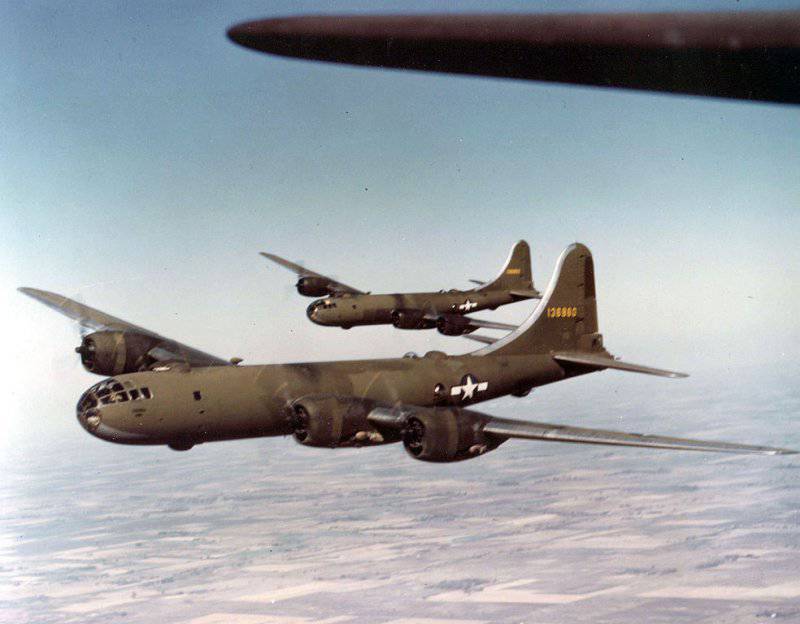
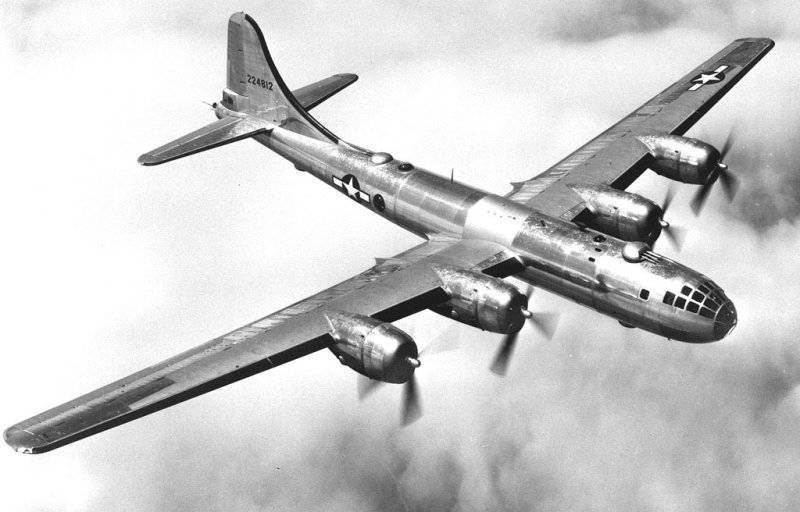
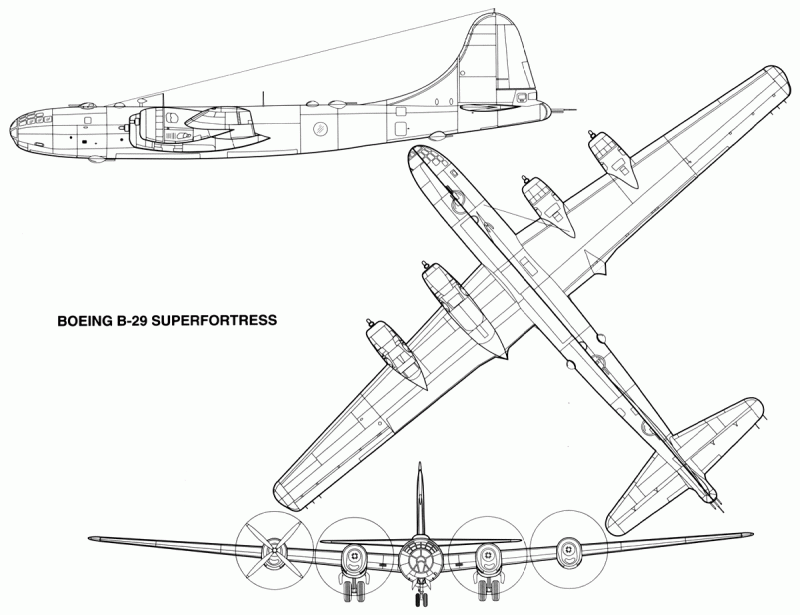
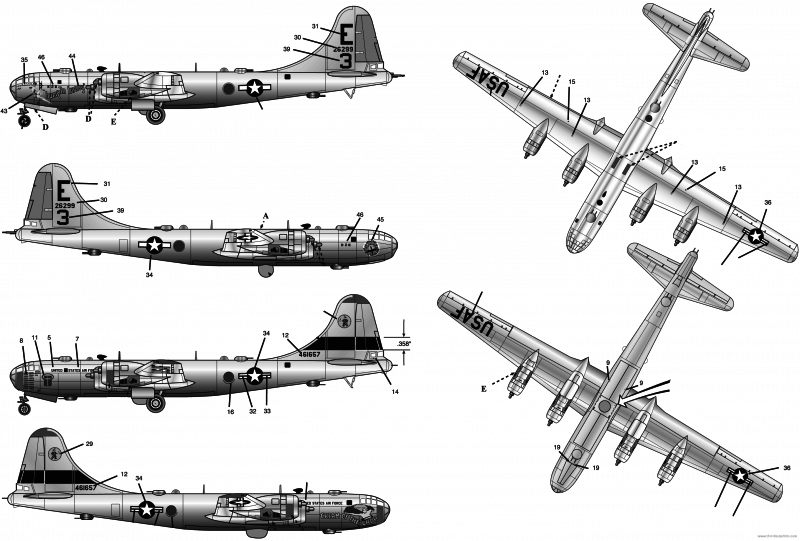
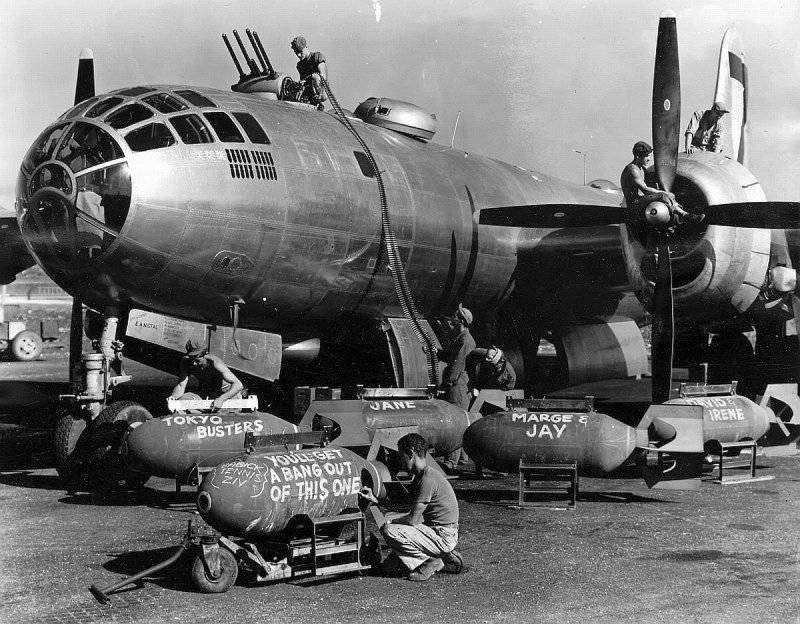
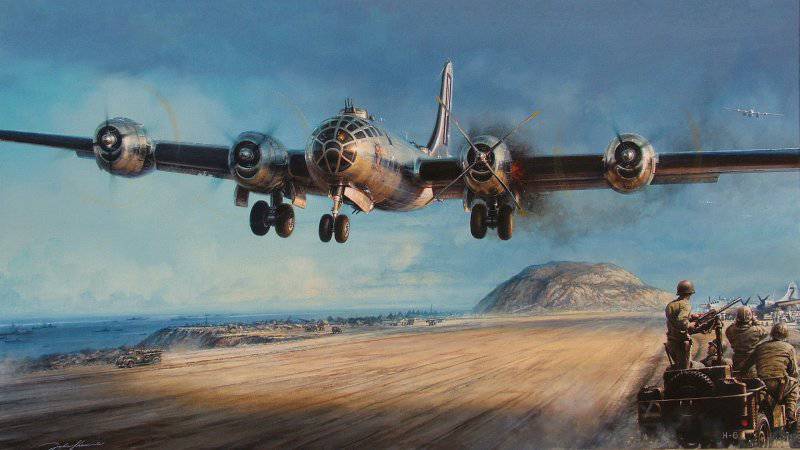
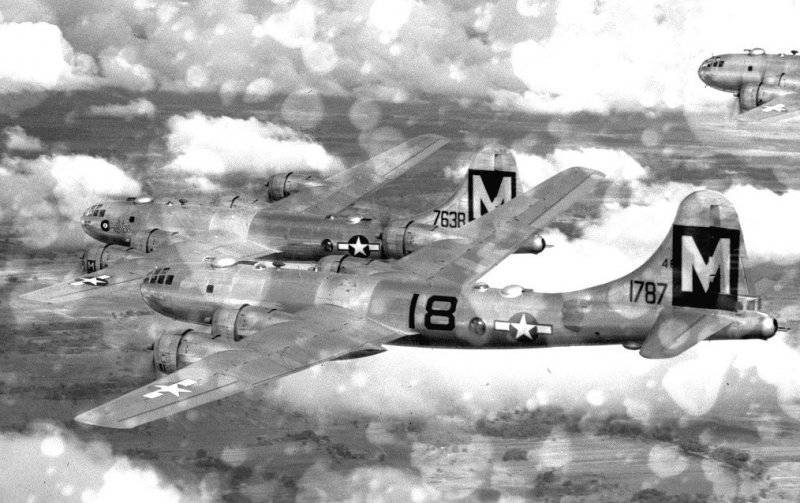
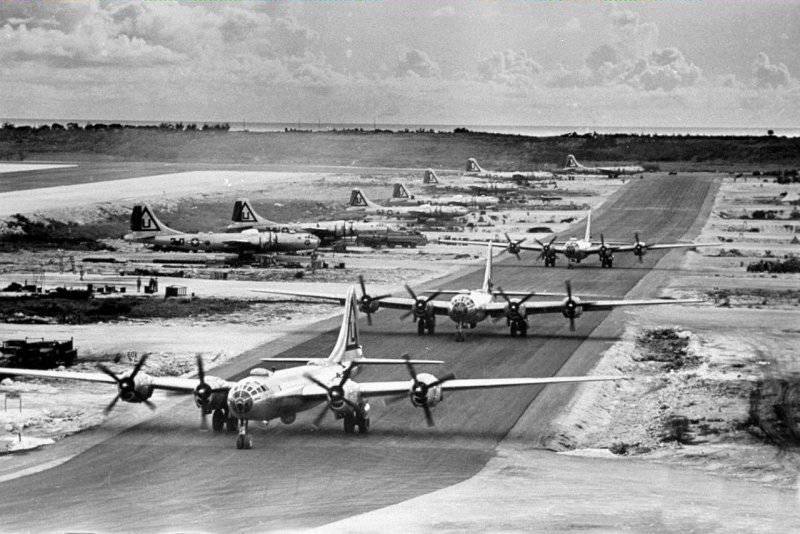
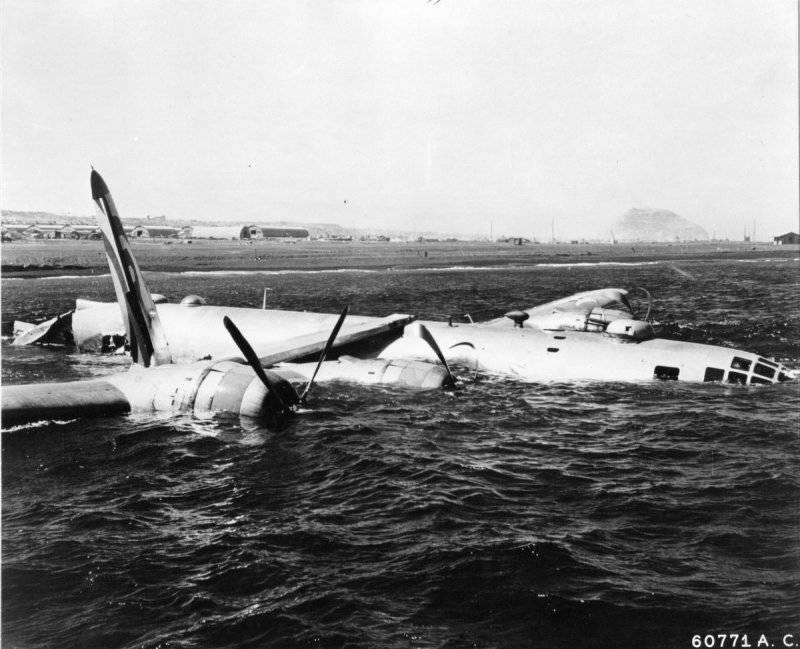
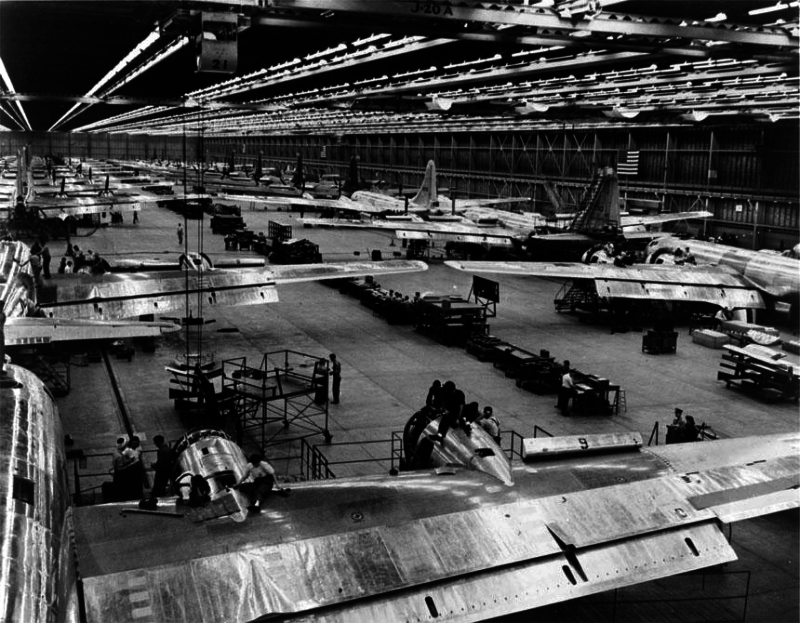
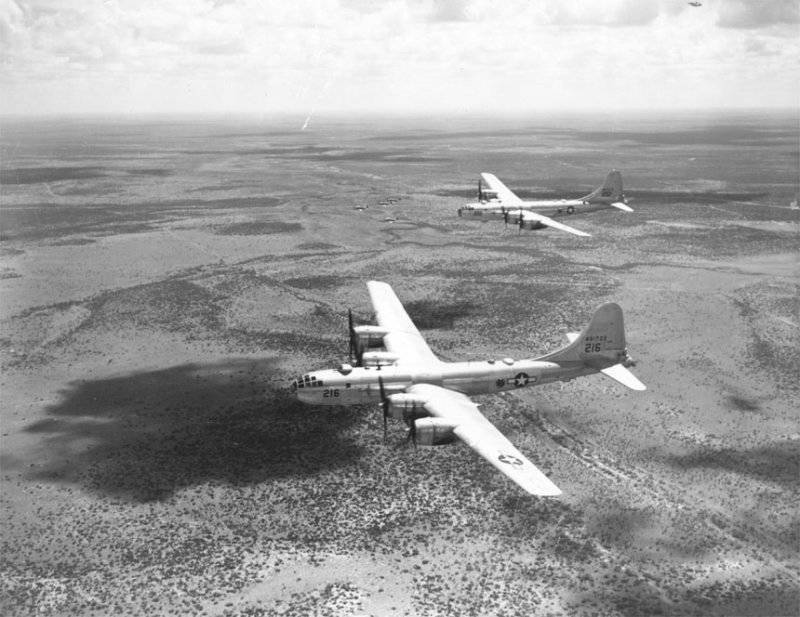
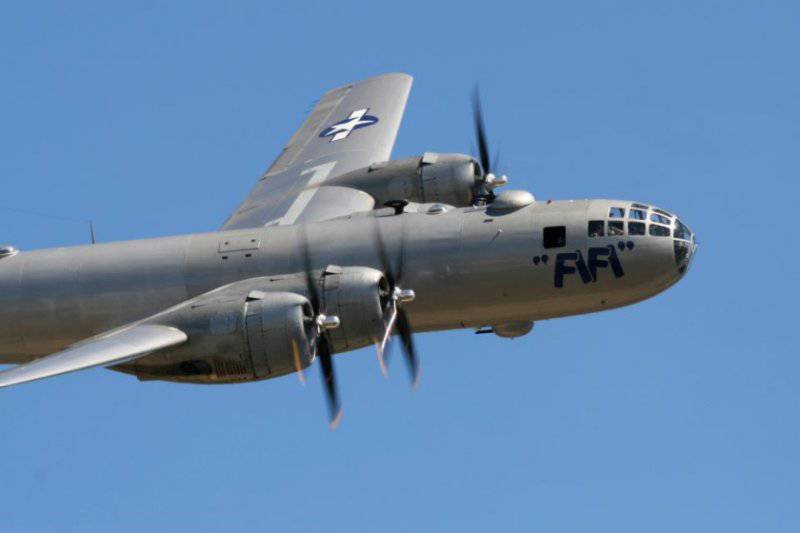
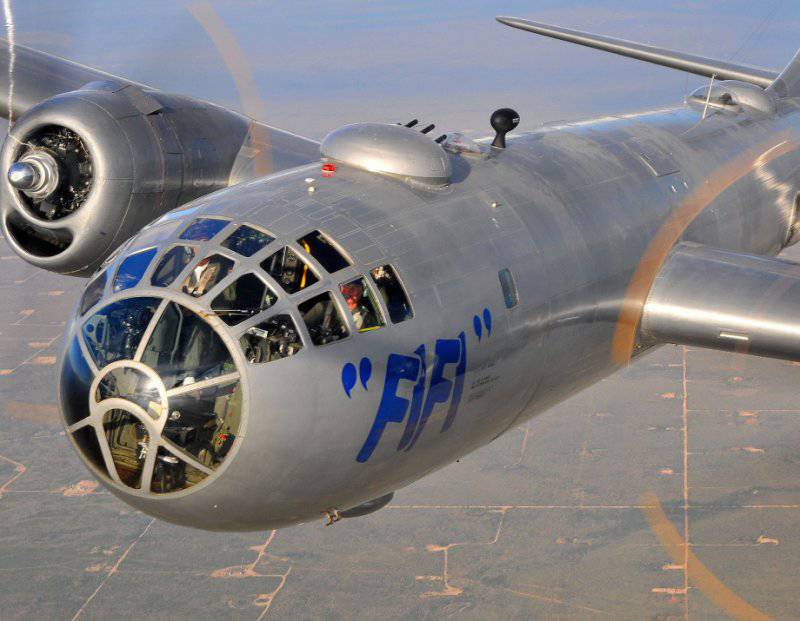
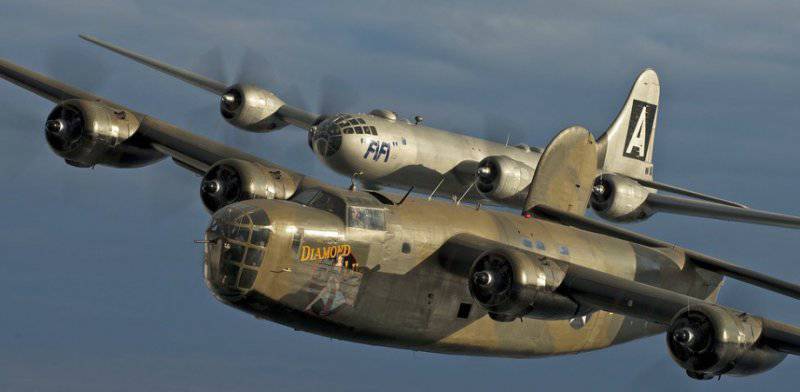
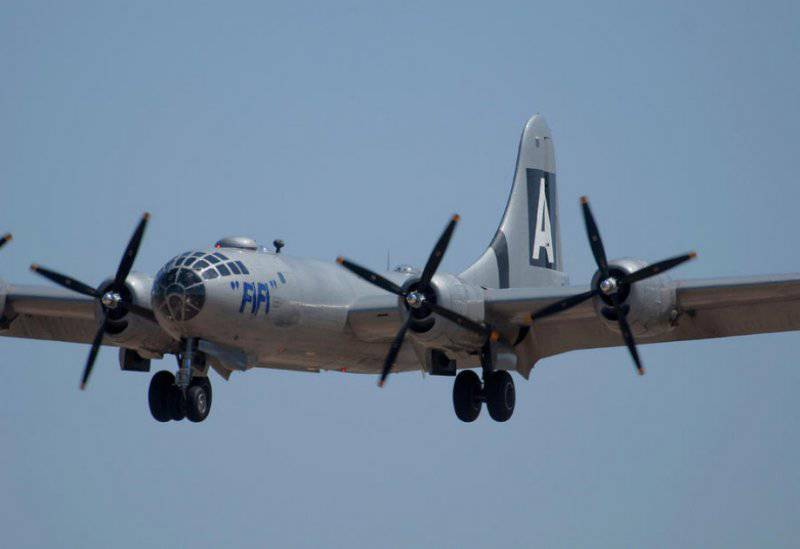
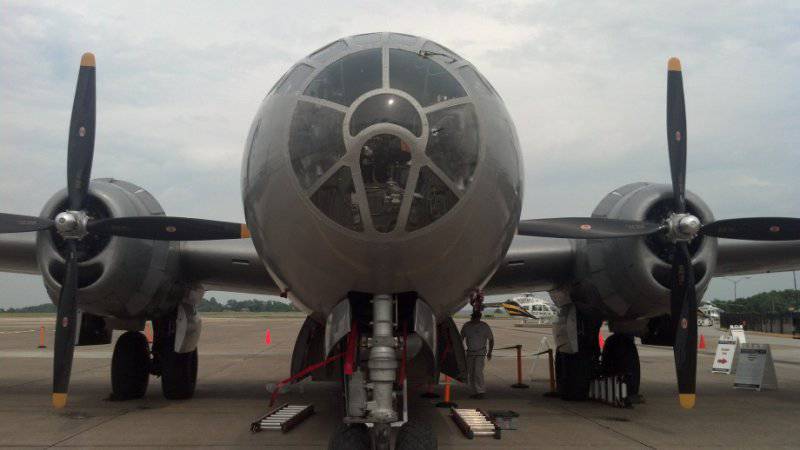
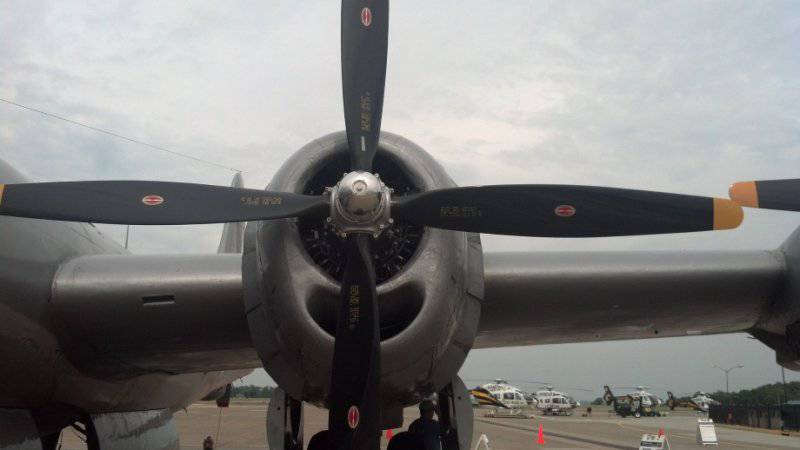
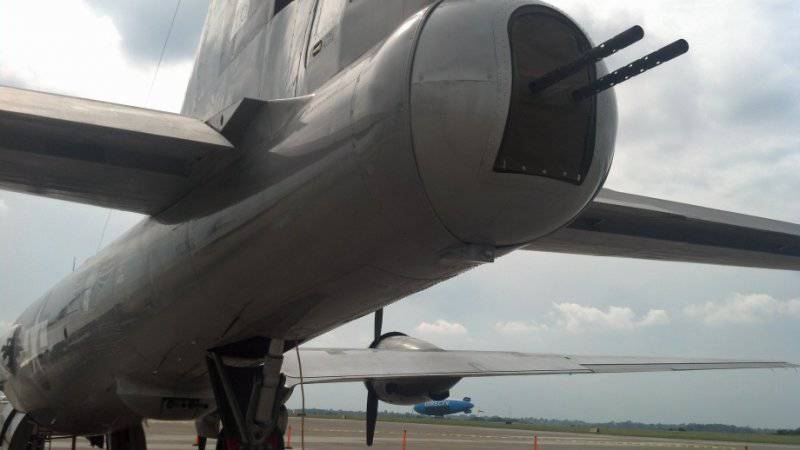
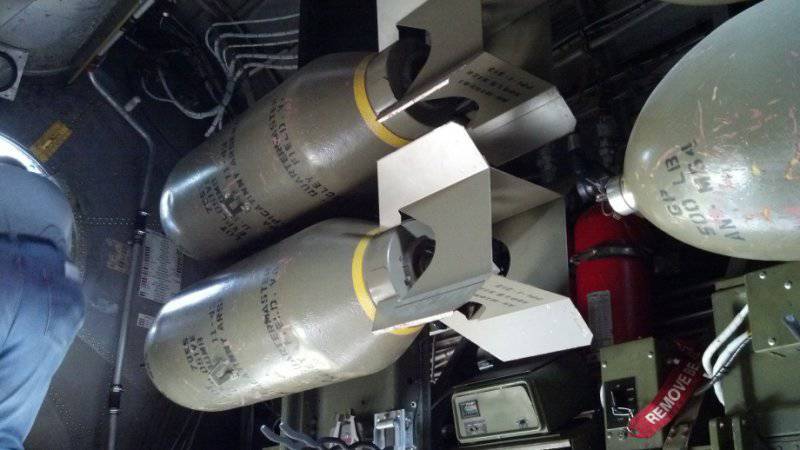
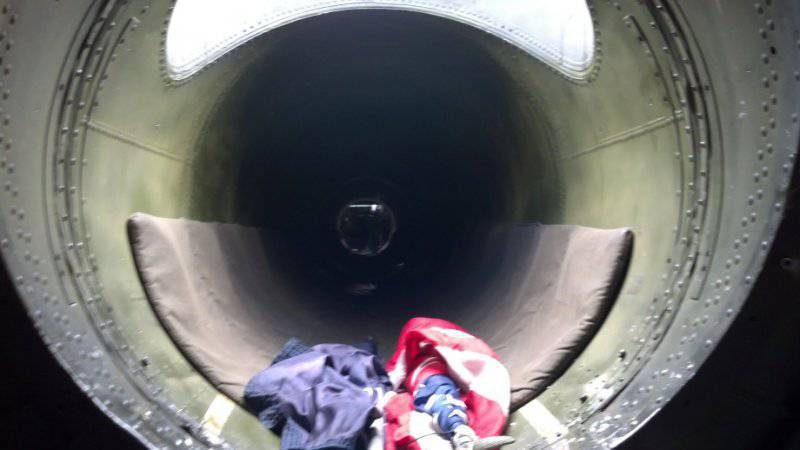
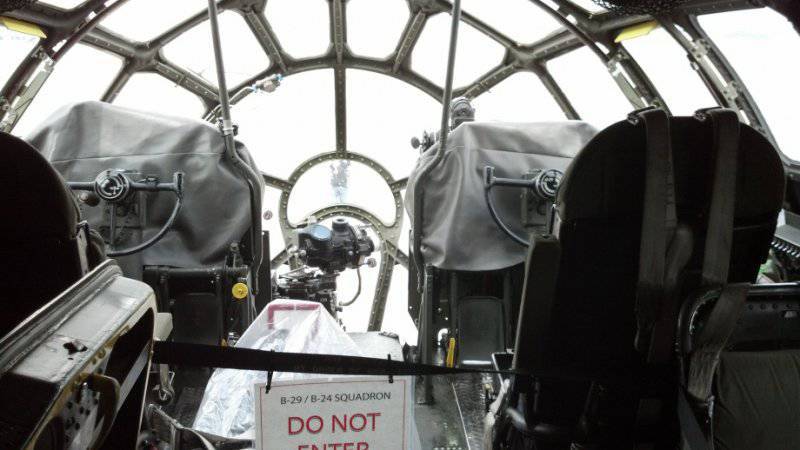
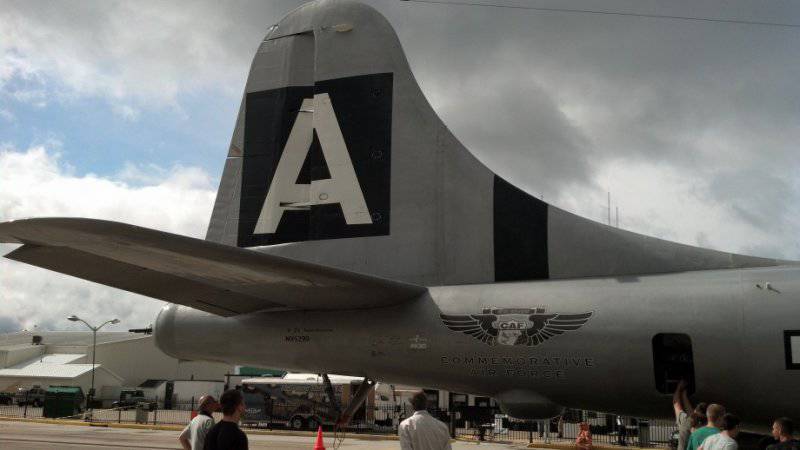
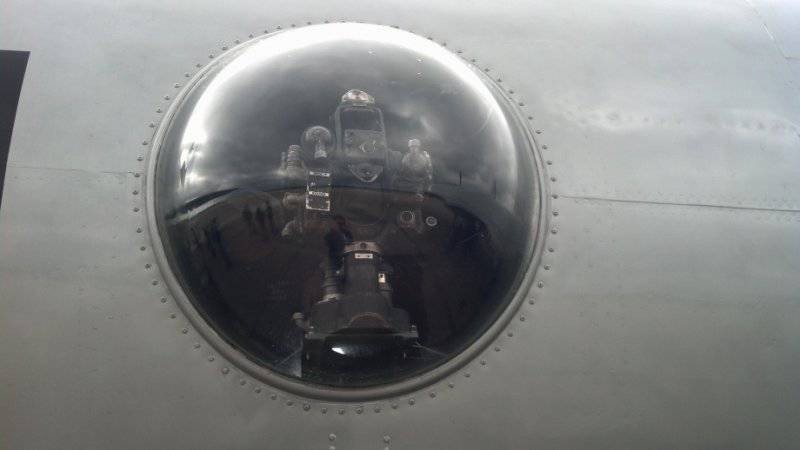
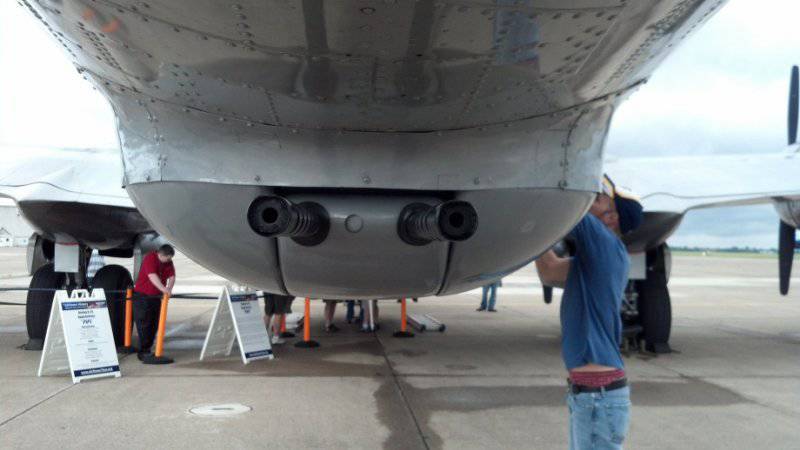
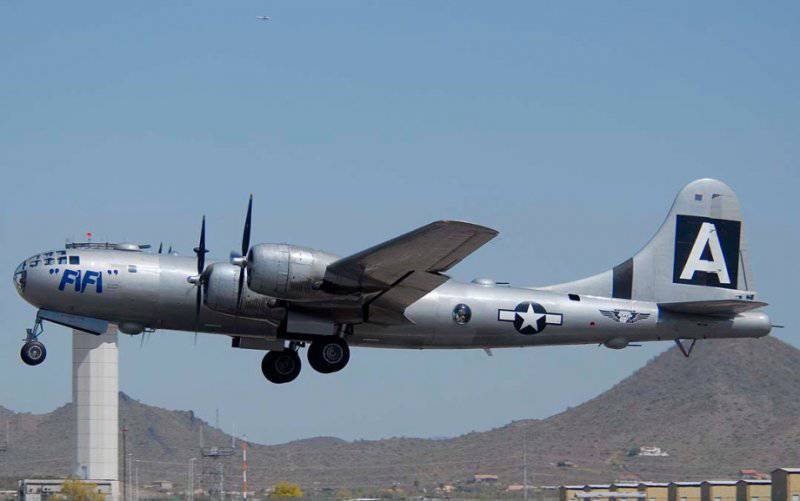
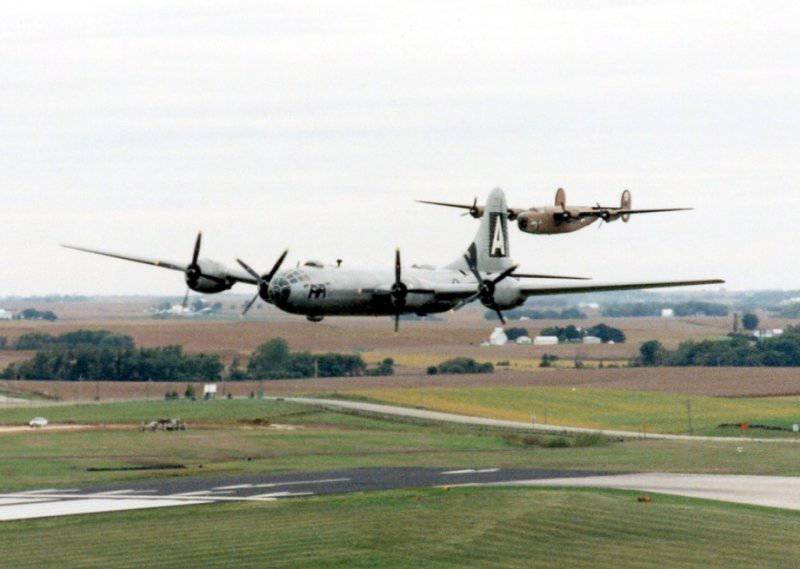
Information